#Galápagos Tortoise
Text

Galápagos tortoise
By: Russ Kinne
From: Man and Wildlife
1970
78 notes
·
View notes
Photo

Galápagos tortoise
Photographed by Daisy Gilardini
116 notes
·
View notes
Text


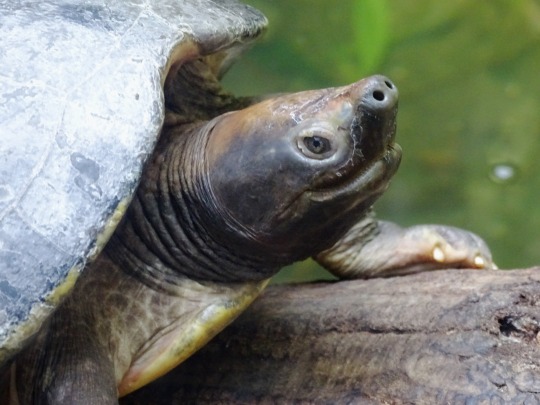
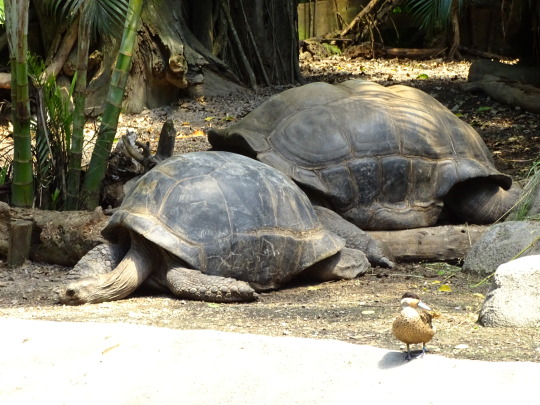

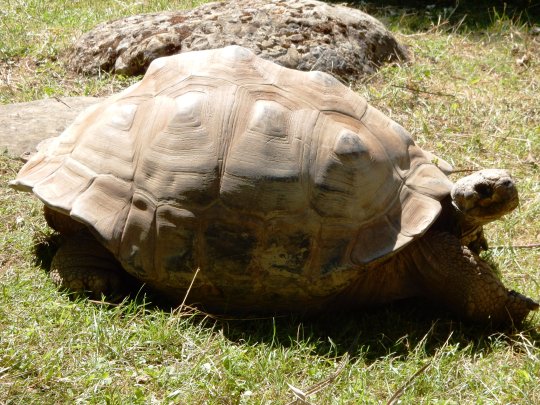

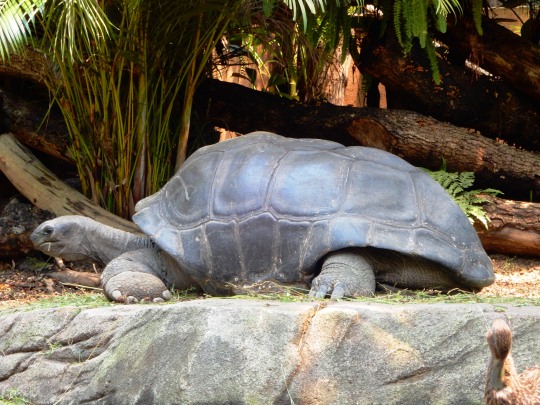
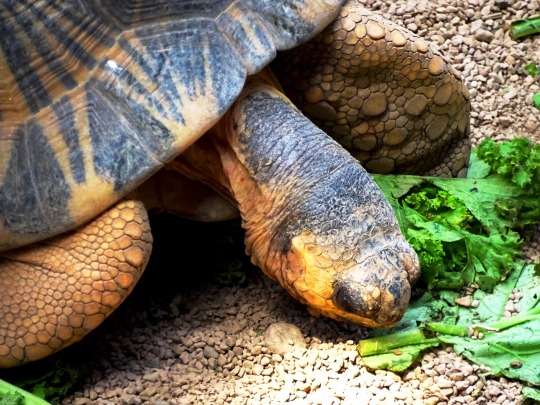

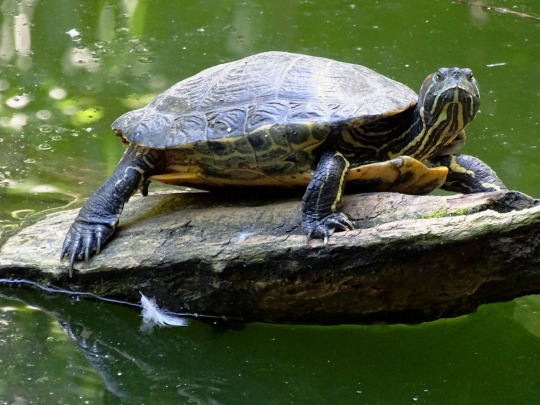
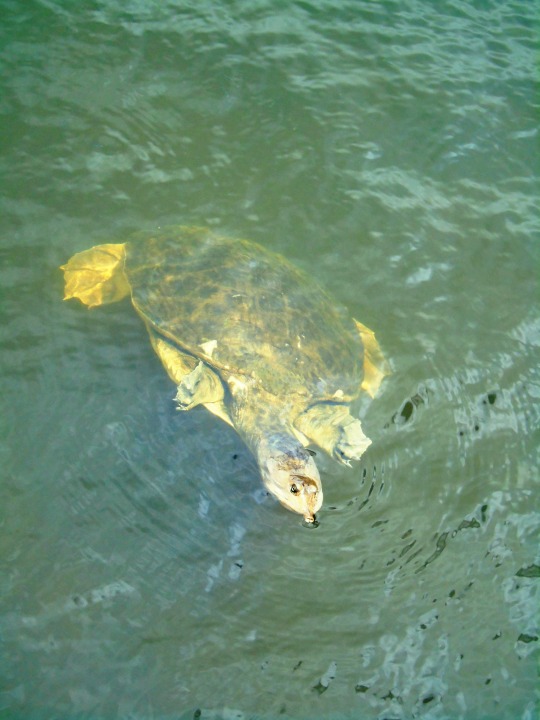

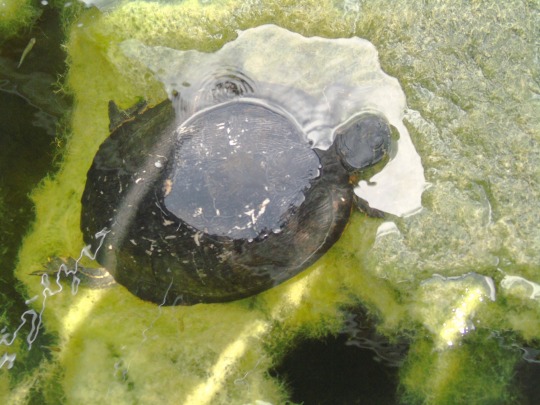
World Turtle Day
World Turtle Day is celebrated on May 23 of every year. The World Turtle Day promoted yearly since 2000 by American Tortoise Rescue which is to bring attention to increase knowledge of and respect for, turtles and tortoises, that inspire human action to help them survive and succeed.World Turtle Day is celebrated around the spheroid in a variation of ways, from dressing up as turtles also by wearing green summer dresses to saving turtles caught on roadways, to research projects. Turtle Day lesson plans and craft designs promote teaching about turtles in classrooms. World Turtle Day is also to celebrate the great reptiles with their place in the world, and this encourages people to take action to protect them, both the common pet turtle and the ever jeopardized sea turtle.
“World Turtle Day is an annual opportunity to reflect on the myriad of threats facing turtles and tortoises and what we can do to protect them.”
History of World Turtle Day
World Turtle Day was created by American Tortoise Rescue in 1990. The term “WORLD TURTLE DAY” is branded by Susan Tellem of Malibu, California American Tortoise Rescue is certified by state and federal companies as a nonprofit corporation to provide for the protection of all species of tortoise and turtle. Orphans that cannot affirm because of ill health remain in the care of American Tortoise Rescue for the balance of their lives. Chase’s Book of Annual Events, the day was created as an annual observance to help people to protect turtles and tortoises and to disappear their habitats globally. Susan Tellem and Marshall Thompson are the founders of the rescue American Tortoise Rescue defend the humane treatment of all animals, containing reptiles. Since 1990, ATR has placed about 3,000 tortoises and turtles in caring homes and also assist law enforcement when undersize and compromised turtles are impounded and provides helpful information which has referrals to persons with sick and abandoned turtles.
In 2013, For over 5,500 students, 160 free Turtle Day Lesson planned and teaching materials were sent out to classrooms. Lesson plans were provided by the Turtle and Tortoise Preservation Group, an organization that is open to all people interested in the welfare of chelonians.
How to Celebrate World Turtle Day
Celebrate the World Turtle Day around the spheroid in a contrast of ways, from dressing up as turtles by wearing green summer dresses to rescuing turtles caught on roadways, to research projects. They’re the astonishing creature, with positive grades making great pets and helping to preserve the eco-system in the waters they live in. Also if we live where snapping turtles haunt the waters, it’s probably a good idea that people know how to withdraw them and where to find them.
Source
#Red-eared Slider#World Turtle Day#WorldTurtleDay#Shellebrate#23 May#Bronx Zoo#Zoo Zürich#Zurich#Schweiz#Switzerland#flora#fauna#water#original photography#Aldabra giant tortoise#Radiated tortoise#USA#Giant South American River Turtle#Galápagos tortoise#everything is Due South#Spider tortoise#reptile#New York City#animal#reflection#travel#vacation#tourist attraction#I really love the first pic#wildlife
3 notes
·
View notes
Text


Volcán Alcedo giant tortoises, Isabela Island, Galápagos, Ecuador
© Tui De Roy/Minden Pictures
Featured on Bing- February 12, 2024
Galápagos tortoise
Home sweet volcano | EN-CA, EN-CN, EN-GB, ROW
Giants of science | EN-US
0 notes
Text

Khara Cloutier
Reptile Brain
2024
Inkjet print on Somerset Museum Rag, uncoated emerald with argon and mercury / coated cobalt with neon / uncoated light green
31.5 x 41.5 x 2 inches
This stylized collage reimagines the Galápagos tortoise as a mythological beast in Darwin’s depiction of our evolutionary timeline. Inspired by neuroscientist Paul MacLean’s triune brain model, Reptile Brain puts humanity’s primal instincts front and center, over our emotions and rational thoughts.
#collage#charlesdarwin#paulmaclean#primalinstincts#humanity#reptilebrain#evolution#neuroscience#tortoise#mythologicalbeast#galápagos#triunebrainmodel#kharacloutier#lettering#neon#neonart#neonartist#neonartwork#typography
2 notes
·
View notes
Note
I’m sick with COVID and bored. Anyways au where Garmadon has the ninjago equivalent of a Galapagos tortoise as a pet. So he won’t outlive it
https://youtube.com/shorts/ed8Lhy8igDs?feature=share
.
17 notes
·
View notes
Photo

Una de las maravillas del archipiélago, una tortuga gigante de Galápagos. . . . 📸 👉🏼 @fotografodegalapagos . Suscríbete a mi BLOG link in my bio. . . . . . . #parquenacional #galapagos #galápagos #galapagosislands #viajes #naturaleza #tortoise #juntoslologramos #ecuadorturistico #ecuador #ecuadorprimero #fotografo #fotografodegalapagos #conservacion #reptil #wildlife #yourshootphotographer #tufotonatgeo #nikon #nikoncreators #nikonD750 #nikonzcreators #viajaecuador (en Galapagos Islands) https://www.instagram.com/p/CkRSkL2JA4b/?igshid=NGJjMDIxMWI=
#parquenacional#galapagos#galápagos#galapagosislands#viajes#naturaleza#tortoise#juntoslologramos#ecuadorturistico#ecuador#ecuadorprimero#fotografo#fotografodegalapagos#conservacion#reptil#wildlife#yourshootphotographer#tufotonatgeo#nikon#nikoncreators#nikond750#nikonzcreators#viajaecuador
0 notes
Text

Article
"2023 was a banner year for the Galapagos Islands: that wondrous archipelago so famous for its giant tortoises and other endemic species.
The long-serving conservation organization the Galapagos Conservancy, also endemic to the islands, recently published its annual report featuring standout figures like over 500 giant tortoises of 5 different species reintroduced to their natural habitat.
Additionally, a critically endangered species of albatross was identified to use giant tortoise feeding sites as take-off and landing areas. This key insight into co-dependency has given the Conservancy confidence that they can restore the populations of both animals to stable, flourishing numbers.
It underscores how far a donation to these endemic wildlife organizations really does go, and these two highlights of a successful year were only possible by the over $6 million in charitable contributions from supporters.
30 Chelonoidis chatamensis tortoises endemic to the smaller island of San Cristobal were repatriated to their natural habitat from the stock of a captive breeding program, while 97 native tortoises were returned to the second-largest island of Santa Cruz.
On the largest island of Isabella, 350 tortoises (214 C. guntheri and 136 C. vicina) were successfully reintroduced to their natural habitat after a survey found their numbers were not rising substantially on their own.
In March, the repatriation of 86 juvenile Chelonoidis hoodensis tortoises significantly contributed to enhancing the species’ distribution across their native habitat. They currently number 3,000 today on Española or Hood Island, a miraculous recovery from the 14 found there in the 1960s.
Also on Española, the endemic waved albatross was found to be taking off and landing on 50 additional parts of the island. These large birds, boasting an 8-foot wingspan, need ample space to get a running start before taking off, and this same principle applies when applying the brakes coming down from the sky.
In the survey, the biologists observed that concentrations of giant tortoises were linked with the usage of areas as runways for the albatross. Because the tortoises are the largest herbivores in the ecosystem, they perform the same acts as bison do in North America and Europe, and elephants in Africa—clear space.
With their herbivorous diet and large bulk, the tortoise’s feeding habits produce cleared areas ideal for albatross use.
“This discovery underscores the interconnectedness of the Galápagos ecosystem,” the authors of the report write. “This newly acquired knowledge allows us to strengthen the synergies between our conservation strategies.”
Of the $6.1 million received from donations and through other activities, the Conservancy was able to spend 77% of that on conservation programs, and that included some ambitious plans for this year—now already half done—which included drafting plans for restoration of the Pinta tortoise to the island of the same name, preparing tortoises for imminent reintroduction to the smaller Floreana island, and completely restoring the habitat for the Galapagos petrels on Santa Cruz.
Operating since 1985, the Galapagos Conservancy has a long track record of restoring these islands to their pre-Colombian glory. Let’s hope 2024 is as successful."
-via Good News Network, July 19, 2024
#galapagos#tortoise#galapagos islands#conservation#biodiversity#albatross#reptile#reptiblr#endangered species#wildlife conservation#ecosystems#climate action#conservation news#good news#hope
561 notes
·
View notes
Photo
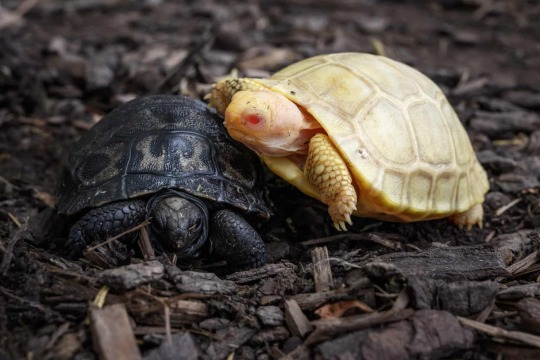
Servion, Switzerland
The first ever recorded albino Galápagos tortoise makes its public debut at a Swiss zoo following its hatching last month
Photograph: Fabrice Coffrini / AFP / Getty Images
#fabrice coffrini#photographer#afp#getty images#albino galapagos tortoise#tortoise#switzerland#zoo#servion#nature#animal
5K notes
·
View notes
Text

Galápagos Giant Tortoise (Chelonoidis nigra), family Testudinidae, Galapagos Islands, Ecuador
This species is the largest terrestrial reptile in the world, weighing up to 417 kg (919 lb).
photograph via: Turtle Conservancy
#giant tortoise#tortoise#turtle#chelonoidis#testudinidae#reptile#herpetology#animals#nature#galapagos#south america
281 notes
·
View notes
Text
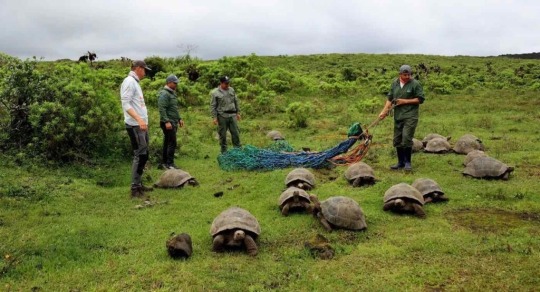
#good news#environmentalism#science#nature#animals#galapagos#galapagos tortoise#tortoises#giant tortoise#conservation#environment
170 notes
·
View notes
Text

Panchita Tunnel, Galápagos, Ecuador: Panchita Tunnel is an intriguing lava tube/cave on Rancho Primicias next to El Chato Tortoise Reserve, in the highlands near Puerto Ayora on Santa Cruz Island, in the Galápagos archipelago, Ecuador, South America. As you descend into the tunnels via stairs, you quickly lose sight of the sun and enter the darkness. Even though they have lights hung throughout. you still have limited visibility.
81 notes
·
View notes
Text
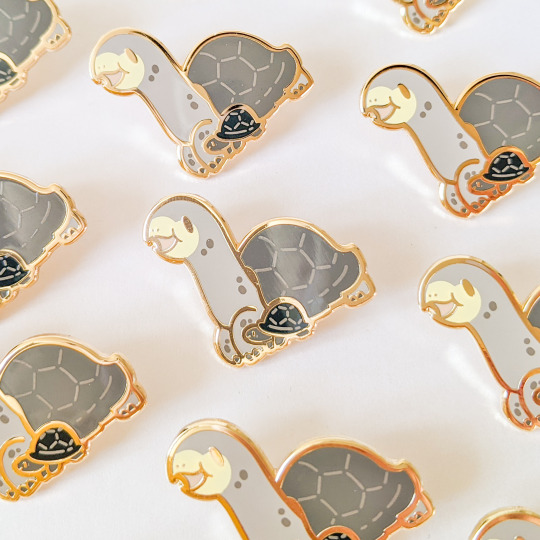

Hope everyone has been having a lovely holiday! Here are previews of January's Tiny Reptile and Mini Amphibian pins: Galápagos Tortoise and Desert Rain Frog! 🦎🔥
These are available in my Patreon until the end of December and will go out when I return from my break in early January!
#patreon pin club#pin club#reptile#herpetology#amphibian#kawaii animals#cute art#tortoise#frog#desert rain frog#galapagos tortoise#enamel pin
143 notes
·
View notes
Photo





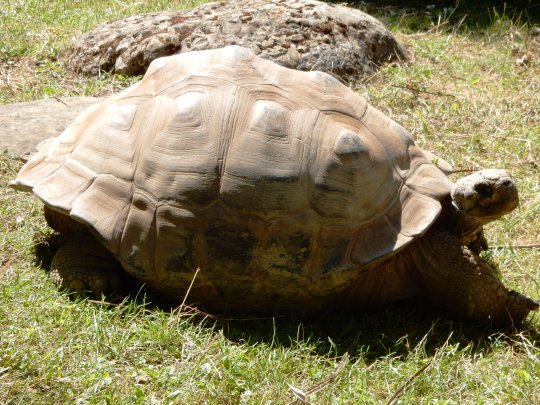


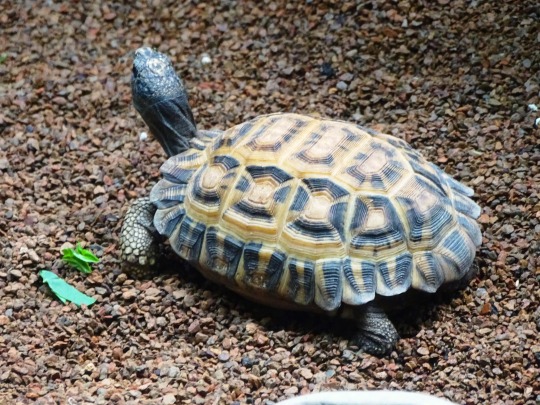
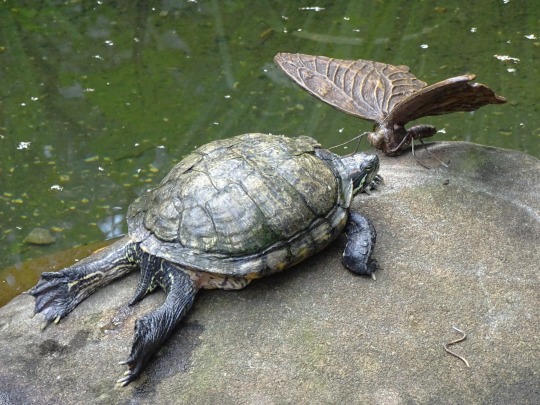
World Turtle Day
Get in touch with the American Tortoise Rescue to see how you can do your part to protect and preserve the wonderful turtles and tortoises in the world.
We hear about them in parables of being slow and plodding, steady and methodical, and being occasionally obsessed with Ninjitsu, news reporters, and pizza. We are, of course, talking about Turtles!
Turtles are a type of reptile that exists in many environments throughout the world and have found their way into literature, poetry, and parable throughout the world’s history. World Turtle Day celebrates these noble reptiles and their place in the world and encourages people to take action to help protect both the common pet turtle and the ever endangered sea turtle.
History of World Turtle Day
Well, the first thing to know is that Turtles and Tortoises are not the same thing, though this day is dedicated to celebrating and protecting both. First created in 1990 by American Tortoise Rescue, World Turtle day recognizes that some species of our hard (and soft!) shelled friends are suffering and almost on the edge of extinction due to environmental hazards, issues with hunting and harvesting of their eggs.
American Tortoise Rescue was created by Susan Tellem and Marshall Thompson, a married pair of animal activists who had a particular passion for tortoises. We all have to have something that drives us in this life, and for these two it was bonding over animal right’s activist work. Don’t think these two are just closet hippies with an overwhelming adoration for all things shelled and scaly.
Susan is deeply involved with television arts & sciences and the public relations society of America while being a partner in Tellem Grody Public Relations Incorporated. They organize charity collections and works around the world to help protect these amazing critters, and created World Turtle Day to get everyone involved and spread awareness of the shrinking habitat and declining numbers of these sensitive creatures.
So what is the difference between turtles and tortoises? Although they are both reptiles, the main difference between the two is that turtles live in the water at least some of the time, while tortoises live on the land. Because they live in the water, turtles have streamlined and mostly flat shells, while tortoises often have larger and more domed ones.
Our tortoise friends can also live longer than their reptilian cousins. Tortoises can live over 300 years, although their average lifespan can go up to around 150 years. Turtles live up until the age of 40, although one record-breaking turtle almost lived to the age of 90!
Learning the differences between our reptile friends is just one of the educational activities that World Turtle Day helps promote. The Turtle and Tortoise Preservation Group (The TTPG) is open to all turtle and tortoise lovers and creates educational material to help teach kids and adults about these reptilian creatures.
The TTPG helps those who are breeding turtles to keep them safe from extinction, by providing advice to turtle and tortoise keepers. From anyone who has a faithful four-legged tortoise friend to expert breeders, the TTPG is there to help.
How to celebrate World Turtle Day
Well first off, contact American Tortoise Rescue and find out what you can do in your area to help promote the protection of turtles. If there are no activities in your area, work with them to find out what you can do to coordinate with local aquariums, pet stores, and nature groups to focus on the species of this reptile that live in your area.
Wherever you are, you can donate online to turtle causes, or even arrange your own charity and awareness campaigns to help support your favorite species. You might want to spare your time rather than your money by getting involved in these events, or simply volunteer at your local pet shop to help out their turtles and tortoises. You don’t have to be near a local conservation area to do your bit to help our reptilian friends.
If you do want to visit a local habitat, why not book a trip and go safely through your local charity to see how they support and help the local wildlife? Across the globe, there are hundreds of places you can visit to help support turtles and tortoises with a licensed charity.
If you have your own tortoise or turtle, why not show it some appreciation on its very own special day? Why not buy your turtle a new rock for its terrarium, or build its very own private basking beach if they don’t have one yet. Why not give their tank an early spring deep clean to make sure they’re lounging in the best possible environment for them.
Studies show that tortoises can respond to the sound of their owner’s voice (might be because you feed them, or they love you, it’s hard to tell). Why not treat them to some of their favorite broccoli, or even give them a good soak when needed to keep them living their best life.
If you’re not near a turtle or tortoise hub, keeping your nearby beaches clean is equally important for local wildlife and their ecosystem. Keeping your local sandy summer spot free from plastic bags or water bottles will keep the surrounding sea and land life happy. Don’t live near a beach?
Plastic can endanger your local wildlife even in an urban environment, and animals from foxes to fish can get caught up in plastic. Why not do a local recycling drive or clear out in your local park as a big thank you to our two, four, and no-legged friends.
They’re an amazing creature, with certain varieties making great pets and others helping to preserve the ecosystem in the waters they live in. Of course, if you live where snapping turtles haunt the waters, it’s probably a good idea that people know how to avoid them, where to find them, and how not to lose a toe! Happy World Turtle Day!
Source
#Red-Eared Slider#Bronx Zoo#my favorite zoo#Zoo Zürich#Zurich#travel#Masoala Halle#Giant South American River Turtle#Radiated tortoise#USA#Aldabra giant tortoise#I really love the first pic#Galápagos tortoise#reptile#animal#Galápagos giant tortoise#World Turtle Day#WorldTurtleDay#vacation#Switzerland#New York City#summer 2018#original photography#tourist attraction#flora#fauna#nature
0 notes
Text

Galápagos tortoise. Last Chance on Earth; a Requiem for Wildlife. Roger A. Caras. Illustrated by Charles Fracé. 1966.
Internet Archive
172 notes
·
View notes
Text
Please reblog for a bigger sample size!
If you have any fun fact about Galápagos Islands, please tell us and I'll reblog it!
Be respectful in your comments. You can criticize a government without offending its people.
48 notes
·
View notes